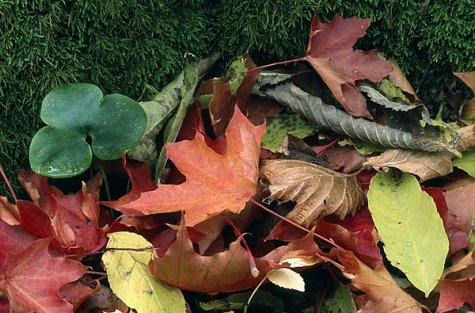Spring in autumn
Photo: Arne Ader
Translation: Liis
Spring in autumn
| Liverleaf, Hepatica, Liverwort |
Harilik sinilill |
Already the word sinilill, “blue flower”, evokes a warm springtime feeling. Its habitats are fresh deciduous or mixed forests with rather rich soil, also spruce forests that have grown from fresh mixed broadleaf forests, and road verges and coppices, particularly with hazel.
The lifetime of the leaves of the Hepatica or liverleaf is about 13-14 months. The young leaves, hairy to start with, begin their growth about one week after the flowering has started and are fully grown already at the end of May, with the characteristic three-lobed shape and the leathery surface.
In the soil is the slanting rhizome of the Hepatica, from which quite thick roots grow out serving as collection and storage organs for nutrients. Otherwise the early spring flowering would not be possible.
Frosts in autumn will not damage the evergreen leaves because most of them will later be hidden in the snow. After the snow has melted an intense photosynthesis begins in order to utilise the springtime period of abundant light before trees and shrubs come into leaf.
The leaves are broad, level with the ground, and so the plant catches a maximum of light radiation. The dark green colour tells about abundant chlorophyll that ensures that the light quanta are efficiently adsorbed in the leaves.
And the Hepatica flowering is not very far off!









